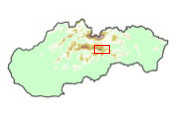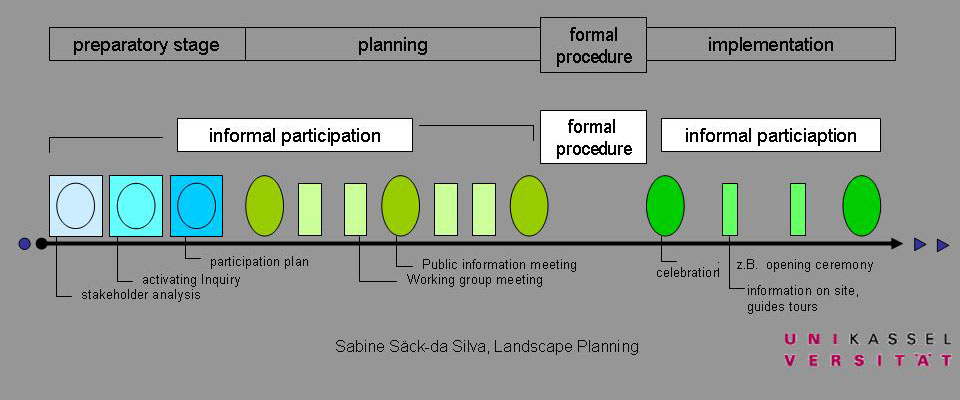Muranska Planina: Difference between revisions
| Line 91: | Line 91: | ||
=== When was public participation most intensive? === | === When was public participation most intensive? === | ||
The involvement of the public and of relevant stakeholder groups has been done only partially up to now. | |||
=== Which participation tools have been applied? === | === Which participation tools have been applied? === | ||
Revision as of 23:47, 17 January 2010
back to Project Biography List
Rationale: Why is this case interesting?
The origin for the present project is the Twinning Project SK2003/IB/EN-03, which was realized during October 2003 until October 2005 under the leadership of the German Federal Ministry for the Environment, Nature Conservation and Nuclear Safety. As a part of the project, which aimed at the implementation of the Conservation of Habitats and Birds Directive for Slovakia, 10 Natura-2000-Management plans have been developed, one of those for the Muranska plánina National Park. After a decision by the Bavarian-Slovak Commission on level of state chancellery in the end of the Twinning Project, the Bavarian State Ministry of Environment and Public Health continued the collaboration with the Slovak Ministry of Environment. The Bavarian Ministry of the Environment provided funding for a project (July 2007 - November 2008), which aimed at the development of several project concepts for submission to different donors. The contents of the project drafts are based on the action-priorities for the Muranska plánina National Park, which have been predefined in the Natura-2000-management plan.
One of the project concepts relates to the project's most important river in the national park - the Muran River and its feeder rivers. In collaboration with the chair of Animal Hygiene, AG Fish Biology and TU Munich a bundle of actions and work packages were developed, which are targeted at ensuring the protection and the improvement of the ecologic and biodiversity situation in the Natura 2000 territory of Muránska planina National Park (NP).
The Muran River system - which is located in Central Slovakia on the south side of the Lower Tatra – is very valuable for nature protection because of its:
- partly original structure
- diversity of species
- high density of Natura 2000 species.
The field mapping of the fauna of molluscs of the Muran River system and the integration of the results into a sustainable management of the river would make a fundamental contribution to protect these highly endangered species, which figures at the Red List of endangered species.
Until 2008 there was no assessment the status quo of the river according to the Water Framework Directive (WFD). An effective conservation of this sensitive aquatic ecosystem should be based on a precise assessment of biodiversity. By the assessment of biodiversity according to seasonal periods the ecologic integrity and the endangerment of the habitat of the Muran river system can be evaluated. The systematic assessment of biodiversity is the basic requirement for a sustainable and ecologic management in the catchment area of Muran and would help to preserve the diversification of species and of the ecosystem at a long-term basis.
Author's personal background
University of Agricultural Sciences of Banat, Timisoara, Romania – Faculty of Horticulture – Landscape Architecture Department – graduated in 2008
Postgraduated studies – Faculty of Architecture – Politehnica University, Timisoara, Romania – Department: Urbanism – Master in Urbanism – graduated in 2009
2008/2009 - urban planning, architectural designing, architectural CAD drawing - in a large office of Architecture Planning in Timisoara, Romania
Since Oct. 2009 - Internship in blue! advanced european projects office in Freising, Germany (First Semester of IMLA studies)
Process Biography Scheme
Please add the scheme of your project's process biography here, below you see an example. Please replace this file with your own.
Who initiated the project and why?
Muránska planina – Non-Investment-Fund (MP-NIF), Revuca
blue! advancing european projects, Freising
in co-operation with TU Munich, Institute for Animal Hygienics, Working Group Fisch biology
along with the participation of:
the Federal Agency for Nature Conservation, Germany (Bundesamt für Naturschutz, Deutschland) BfN
the German Federal Ministry for the Environment, Nature Conservation and Nuclear Safety
the Bavarian State Ministry of Environment and Public Health
the Slovak Ministry of Environment
Why ?
to ensure the protection and the improvement of the ecologic and biodiversity situation in the Natura 2000 territory of Muránska planina National Park (NP), on the background of the implementation of the Conservation of Habitats and Birds Directive for Slovakia
Overall objective:
Preservation and improvement of biodiversity in the catchment area of Muran River
• Consolidation of awareness for the precious aquatic habitats in and along the Muran River (Target groups: local and regional stakeholder groups, public authorities and citizens)
• Improvement of aquatic habitats for valuable species with the aid of an established planning of concrete implementation measures
• Professional assessment of species according to the research program (drafted by the TU Munich in cooperation with local biologists) and development of methodical competency on both sides
When was public participation most intensive?
The involvement of the public and of relevant stakeholder groups has been done only partially up to now.
Which participation tools have been applied?
On which level of participation?
Which stakeholders have been involved?
Have there been any festivities in order to involve the public?
Who made the major decisions and when?
Image Gallery
- Yourimage.jpg
your image text
- Yourimage.jpg
your image text
- Yourimage.jpg
your image text
- Yourimage.jpg
your image text
- Yourimage.jpg
your image text
- Yourimage.jpg
your image text
References
back to Project Biography List

